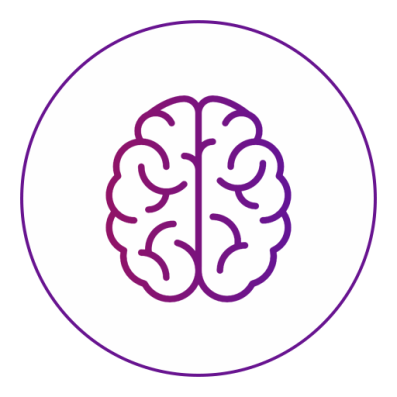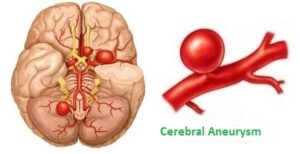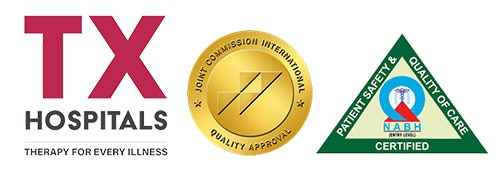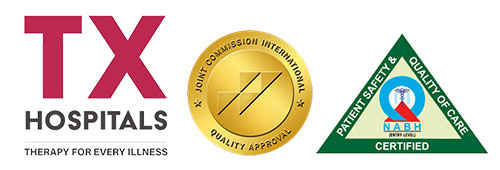Cerebral Aneurysm Surgery in Hyderabad

What is Cerebral Aneurysms?
A cerebral aneurysm, also known as a brain aneurysm, is an abnormal, balloon-like bulge that forms in a weakened blood vessel in the brain. The exact causes of cerebral aneurysms are still not fully understood. However, certain risk factors, such as high blood pressure, smoking, family history of aneurysms, and certain genetic disorders, can increase the likelihood of their development.

Why is Cerebral Aneurysm Surgery Performed?
Cerebral aneurysm surgery is performed to prevent the rupture or re-rupture of an aneurysm, which can result in a life-threatening condition called subarachnoid hemorrhage. The surgery aims to eliminate the risk of bleeding by either removing the aneurysm or placing a specialized clip around its neck to prevent rupture. Prompt surgical intervention is crucial to minimize the potential complications associated with a ruptured aneurysm.
How to Prepare for Cerebral Aneurysm Surgery
Preparing for cerebral aneurysm surgery involves several important steps:
- Consultation and Evaluation: Schedule a consultation with a best neurosurgeon in Hyderabad who specializes in cerebral aneurysm surgery. During this visit, the surgeon will assess your medical history, conduct a thorough physical examination, and review any imaging studies (such as magnetic resonance imaging or computed tomography scans) to confirm the presence and characteristics of the aneurysm.
- Discussion of Treatment Options: Neurosurgeon will discuss the cerebral aneurysm treatment options available for your specific case. This may include surgical intervention or alternative procedures, depending on the size, location, and overall condition of the aneurysm. It is crucial to ask questions and ensure a clear understanding of the risks, benefits, and expected outcomes of the recommended treatment.
- Preoperative Instructions: Follow the preoperative instructions provided by your neurosurgeon. These may include fasting for a certain period before surgery, adjusting medications, and refraining from specific activities or substances that could interfere with the procedure or anaesthesia.
- Psychological Preparation: Acknowledge and address any anxiety or concerns you may have regarding the surgery. Engaging in relaxation techniques, seeking support from loved ones, and discussing your concerns with your healthcare team can help alleviate preoperative stress and promote emotional well-being.
- Cerebral Aneurysm Surgery Procedure: Cerebral aneurysm surgery can be performed using two main techniques: clipping and endovascular coiling. Let’s explore each of these procedures in detail:
- Clipping: Clipping involves a craniotomy, which is the opening of the skull, to access the aneurysm directly. The surgeon places a small metal clip around the neck of the aneurysm to stop blood flow into it. This prevents rupture and reduces the risk of bleeding.
- Endovascular Coiling: Endovascular coiling is a less invasive procedure that utilizes catheters and imaging guidance to access the aneurysm from within the blood vessels. Soft platinum coils are inserted into the aneurysm, promoting blood clotting and sealing off the weakened area.
Consequences of Delaying Cerebral Aneurysm Surgery
Delaying cerebral aneurysm surgery can have serious consequences:
- Aneurysm Rupture: An untreated aneurysm is at risk of rupturing, which can lead to a potentially fatal condition called subarachnoid hemorrhage. This bleeding into the space surrounding the brain can cause brain damage or even death.
- Neurological Deficits: If an aneurysm ruptures, it can result in neurological deficits such as paralysis, speech difficulties, memory loss, and cognitive impairment. The severity of these deficits depends on the location and extent of the bleeding.
- Re-bleeding: Even if a ruptured aneurysm does not lead to immediate death, the risk of re-bleeding remains high. Re-bleeding can occur within days or weeks and carries a significantly higher mortality rate than the initial rupture.
- Emergency Treatment: Delaying surgery may increase the need for emergency interventions, which can be riskier and less effective than planned, elective procedures. Emergency surgeries may also result in longer hospital stays and more extensive recovery periods.
Frequently Asked Questions (FAQs)
A cerebral aneurysm, also known as a brain aneurysm, is a weak or bulging area in the wall of a blood vessel in the brain. It occurs when the blood vessel’s wall becomes thin and can potentially rupture, leading to bleeding in the brain. Cerebral aneurysms can vary in size and shape and are typically asymptomatic until they rupture.
The exact causes of cerebral aneurysms are not fully understood. However, certain factors may contribute to their development, including:
Weakness in the blood vessel wall: The walls of blood vessels in the brain can weaken over time, making them more susceptible to aneurysm formation.
Genetic factors: There may be a familial predisposition to developing cerebral aneurysms, indicating a possible genetic component.
High blood pressure: Uncontrolled high blood pressure can strain the blood vessel walls, increasing the risk of aneurysm formation and rupture.
Smoking and substance abuse: Tobacco smoking and certain illicit drugs have been associated with an increased risk of cerebral aneurysms.
Age and gender: Cerebral aneurysms are more common in individuals over the age of 40, and women are more likely to develop them than men.
Most cerebral aneurysms do not cause symptoms until they rupture. However, when symptoms do occur, they can include:
Sudden and severe headache
Vision changes or double vision
Neck pain or stiffness
Nausea and vomiting
Sensitivity to light
Seizures
Loss of consciousness
It is important to note that these symptoms can also be indicative of other medical conditions, so it is essential to seek medical evaluation for an accurate diagnosis.
The diagnosis of cerebral aneurysms typically involves a combination of imaging tests and medical evaluation. These may include:
Computed tomography angiography (CTA): This imaging technique combines a CT scan with the injection of a contrast dye to visualise the blood vessels in the brain and detect the presence of an aneurysm.
Magnetic resonance angiography (MRA): MRA uses magnetic fields and radio waves to create detailed images of the blood vessels, aiding in the detection and evaluation of cerebral aneurysms.
Cerebral angiography: This invasive procedure involves the injection of a contrast dye into the blood vessels to obtain X-ray images, providing precise information about the size, location, and shape of an aneurysm.
The treatment of cerebral aneurysms depends on several factors, including the size, location, and overall health of the patient. Treatment options may include:
Observation: Small, unruptured aneurysms with a low risk of rupture may be monitored regularly through imaging tests.
Surgical clipping: This procedure involves placing a small metal clip around the neck of the aneurysm to prevent blood flow and reduce the risk of rupture.
Endovascular coiling: In this minimally invasive procedure, tiny platinum coils are inserted into the aneurysm to promote blood clotting and prevent rupture.
Flow diversion: This newer technique involves placing a stent-like device across the aneurysm’s neck to divert blood flow away from the aneurysm, reducing the risk of rupture.
Aneurysm embolization: In this procedure, a substance is injected into the aneurysm to promote blood clotting and block the blood flow, preventing rupture.
The choice of treatment depends on various factors and should be discussed with a qualified healthcare professional.







